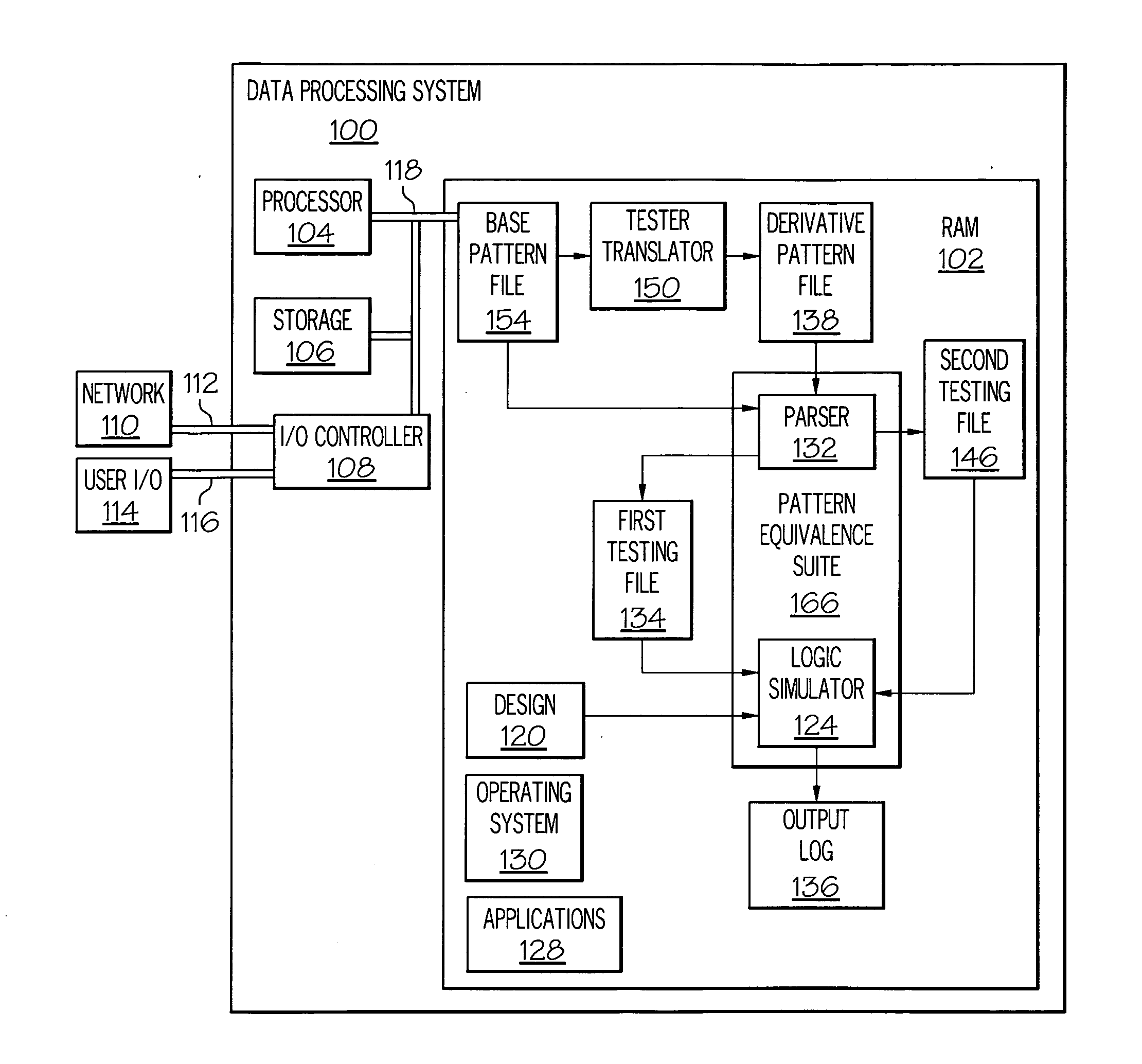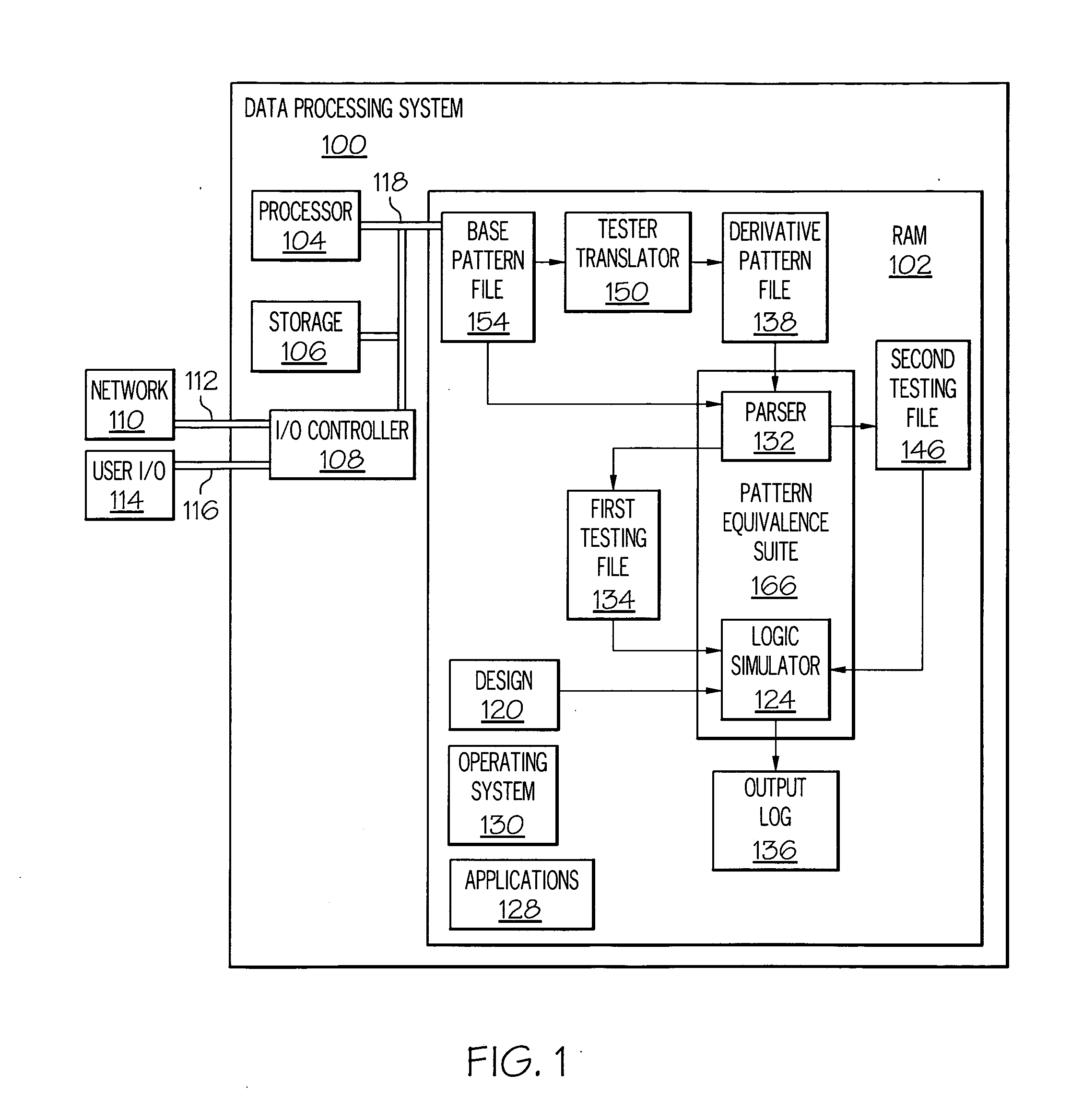Method and system for verifying equivalence of two representations of a stimulus pattern for testing a design
a stimulus pattern and equivalence technology, applied in the field of verification designs, can solve problems such as the inability to establish the equivalence between the supposedly correct tbdpatt-formatted pattern and the ate-formatted pattern, and the loss of tolerance of microprocessor users for being error-prone,
- Summary
- Abstract
- Description
- Claims
- Application Information
AI Technical Summary
Problems solved by technology
Method used
Image
Examples
Embodiment Construction
[0015] The present invention provides a method, system and computer program product for verifying the equivalence of two representations of a stimulus pattern for testing a design. The present invention is a tool that has the capability to simulate the response of a hardware design to patterns in both ATE and TBDpatt pattern formats. Using the present invention, equivalence can be established between various pattern types. Therefore, the present invention can uncover inaccurate models and translation errors, allowing DFT team members and tester team members to concentrate on debugging real hardware failures on the tester. While the present invention is described with respect to ATE formatted files, additional pattern formats can be supported in the same manner.
[0016] With reference now to the figures, and in particular with reference to FIG. 1, a block diagram of a general-purpose data processing system, in accordance with a preferred embodiment of the present invention, is depicte...
PUM
 Login to View More
Login to View More Abstract
Description
Claims
Application Information
 Login to View More
Login to View More - R&D
- Intellectual Property
- Life Sciences
- Materials
- Tech Scout
- Unparalleled Data Quality
- Higher Quality Content
- 60% Fewer Hallucinations
Browse by: Latest US Patents, China's latest patents, Technical Efficacy Thesaurus, Application Domain, Technology Topic, Popular Technical Reports.
© 2025 PatSnap. All rights reserved.Legal|Privacy policy|Modern Slavery Act Transparency Statement|Sitemap|About US| Contact US: help@patsnap.com



